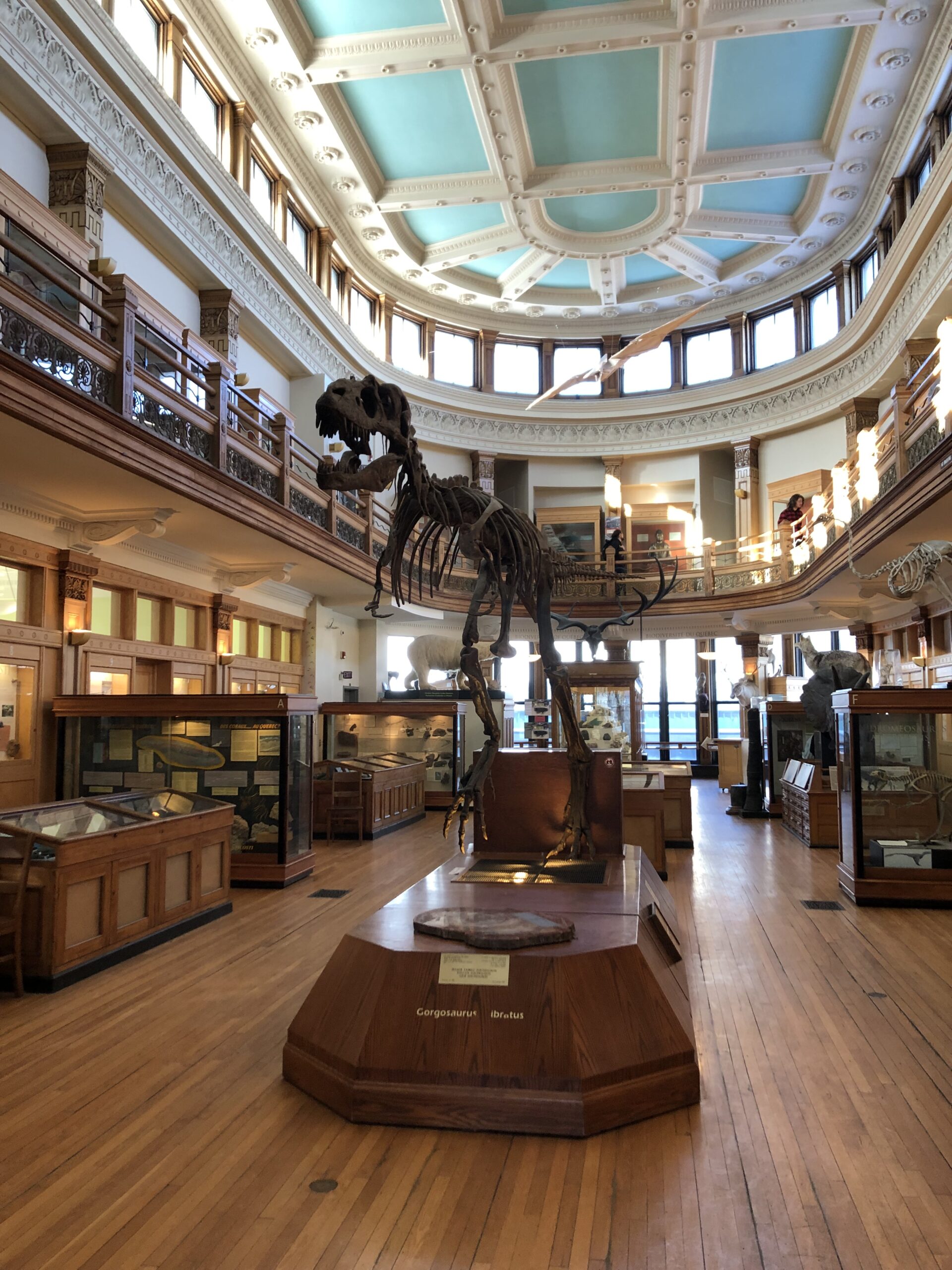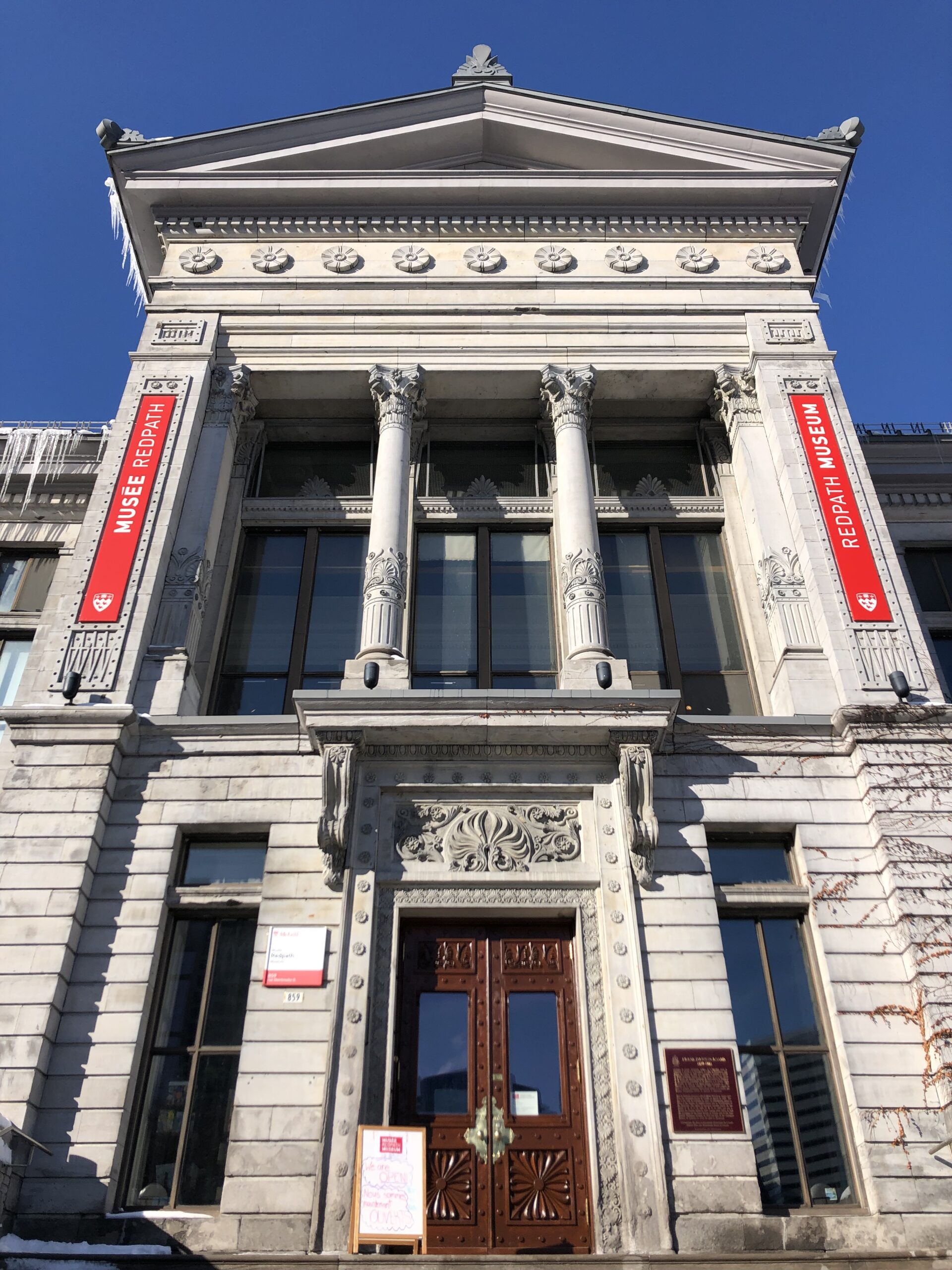For the first time in over two years, the Redpath Museum is open to the public.
After working closely with McGill administration to prioritize the health and safety of visitors and staff, the Redpath officially reopened on January 10. The Museum, constructed in 1882, is home to an impressive array of artifacts from McGill’s natural history and world cultures collections.
Since reopening, the Museum has seen a steady flow of patrons, including members of the McGill community and the public, with 280 visitors on opening day alone. “It was fantastic – there’s clearly a lot of pent-up desire to be back in the building, and excitement about being here,” said Rowan Barrett, Interim Director and Associate Professor at the Redpath, and Canada Research Chair in Biodiversity Science.
Must-see collections

Despite being closed for an extended period due to issues stemming from the pandemic, staff shortages and on-campus construction, Museum staff maintained the Redpath’s presence through virtual events, including a Mystery Animal Challenge, virtual map tours and weekly outdoor displays. The latter, which began last summer and continued into the fall semester, were a lasting success with students and tourists who had the opportunity to see and touch fossils, minerals and ancient pottery.
Now, it’s once again possible for students, school groups and the public to visit the celebrated collections. “As museums are meant to be spaces for education, research, enjoyment and reflection, I am really excited,” said Annie Lussier, the curator of the Redpath’s World Cultures collection. “The connections people have with the Museum objects are very personal, and I look forward to hearing about our visitors’ experiences as they discover McGill’s collections.”
The Redpath is home to an impressive variety of artifacts and specimens. Its holdings include the spectacular Gorgosaurus skeleton, the centerpiece of the Dawson Gallery, which also houses prehistoric animals, endangered and extinct species and a section on Quebec’s biodiversity that spans from the present to the very distant past. “While in truth, all our exhibits are a must-see, the fossil remains of ancient fish found at Quebec’s Parc Miguasha, a UNESCO world heritage site, are truly awe-inspiring,” said Anthony Howell, a curatorial technician in the Zoology collection.
Learning opportunities for students

Students who wish to get involved with the Redpath have several options. As part of McGill University, the Museum offers opportunities for students to work (through the Work Study program) and conduct research. The Redpath is also integrated into multiple McGill courses. One such example is BIOL 305: Animal Diversity, offered in the current Winter 2023 semester. Students taking part in the course benefit from one three-hour laboratory each week, during which they access and analyze specimens from the Museum.
“One of the great strengths of having a museum in a university context is that hands-on learning experience with the collection,” said Barrett, one of the course instructors. “When we walk our students through the phylogenetic tree of life, they are able to hold the specimens in their hands and think about the evolution of these species in a way that doesn’t translate from simply looking at an image.”
During the closure, staff, in collaboration with the McGill Faculty of Science, created 3D scans of certain objects to enable students to interact with the collections in the context of their coursework, and Barrett hopes to eventually digitize the entire collection.
Outside of the classroom, any student can volunteer by joining the Redpath Museum Society (RMS), a student-run organization that focuses on providing outreach programs and events for the McGill community and beyond.
Activities for the wider public
The Redpath also participates in Nuit Blanche, an annual all-night celebration of art and culture across Montreal. “Nuit Blanche always generates a lot of interest,” said Ginette Dessureault, Administrative Assistant at the Museum. “In previous years, we’ve seen long lines of people waiting outside to see the Museum at night.” Nuit Blanche, which celebrates its twentieth anniversary this year, will be held on Saturday, February 25.
The Museum is also preparing to host Paleo Week, a simulated paleontology camp during March break. According to Dessureault, the event is highly popular with families with young children, who get to complete a scavenger hunt and participate in other activities. “A lot of adults come by themselves, too, so we also offer an adult version of the activities,” Dessureault said.
Educators are encouraged to enquire about bringing their students to the Redpath, where guided tours will be offered for groups of all levels, from preschool to college students. The Redpath is currently open from Tuesday to Friday, 9:30 a.m.–4:30 p.m., with plans to reopen on weekends later this year.
Visit the Redpath Museum website for more information.
